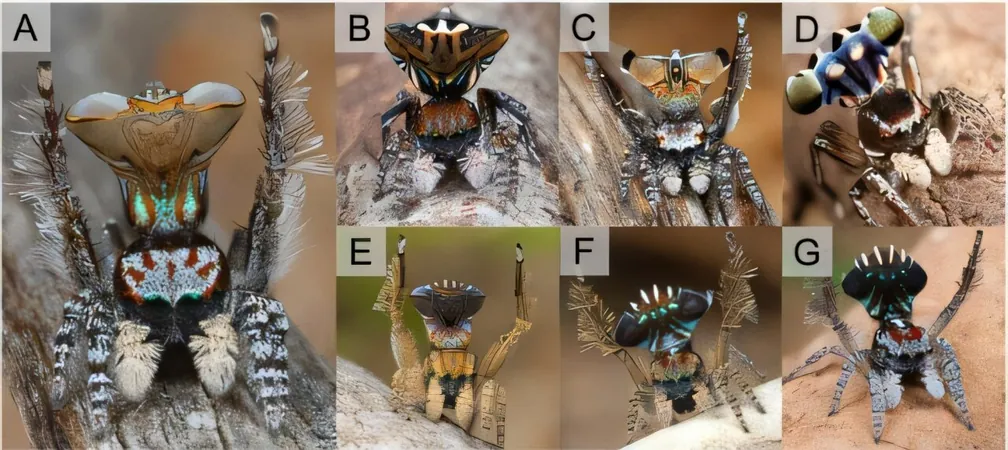
Amazing Spider Illusions: How Jumping Spiders Outsmart AI and Predators!
2025-07-16
Author: Rajesh
The Incredible Mimicry of Jumping Spiders
Imagine a spider so clever it resembles a wasp, a creature that typically hunts it! Scientists at the University of Cincinnati were intrigued by these jumping spiders, leading them to investigate whether these remarkable mimics actually resemble insect faces or if our perceptions are simply skewed.
Turning to Technology for Answers
Faced with travel restrictions due to COVID-19, the researchers pivoted to technology. They enlisted the help of artificial intelligence to analyze digital images of jumping spiders, praying mantises, and wasps to see if a computer could accurately identify them. The findings? Astonishingly, even the AI was fooled nearly 12% of the time, proving just how effective the spiders' disguises are!
The Peacock Spider: Nature's Illusionist
One standout species, the peacock-jumping spider, known scientifically as *Maratus vespa*, was the catalyst for this research. During its vibrant courtship dances, this spider lifts its abdomen to showcase a striking, wasp-like appearance, complete with side flaps that mimic a wasp's signature shape. This clever ruse not only attracts mates but also confuses predators.
A Strategy of Survival and Seduction
Why would a spider mimic a predator? As it turns out, when they spot potential threats, they freeze, providing an opportunity for males to approach the females undetected. The researchers combined computer vision with machine learning to see how effectively AI could classify these images, and results revealed that specific spiders were misidentified as wasps over 20% of the time!
Animal Deception: A Common Survival Tactic
This form of deception isn’t new in the animal kingdom; some male moths can imitate the calls of bats to better their chances in mating, while topi antelopes use phantom alarms to keep does from fleeing. Yet, this visual mimicry in jumping spiders is unique and highlights their evolutionary strategy.
Exploring the Female's Perspective
The researchers discovered that the illusion works best from a distance or in the peripheral view of the female spider, who predominantly sees in monochrome. However, as the male approaches, her more discerning eyesight kicks in, ensuring that the illusion doesn’t last indefinitely. As study co-author Nathan Morehouse noted, if females were always deceived, it would threaten the species' ability to choose suitable mates.
Next Steps in Research
As researchers plan to conduct live behavior experiments with these fascinating spiders, the questions deepen: How will these jumping spiders adapt their tactics in the wild? One thing is certain — the world of jumping spiders and their extraordinary deceptions is anything but dull!

 Brasil (PT)
Brasil (PT)
 Canada (EN)
Canada (EN)
 Chile (ES)
Chile (ES)
 Česko (CS)
Česko (CS)
 대한민국 (KO)
대한민국 (KO)
 España (ES)
España (ES)
 France (FR)
France (FR)
 Hong Kong (EN)
Hong Kong (EN)
 Italia (IT)
Italia (IT)
 日本 (JA)
日本 (JA)
 Magyarország (HU)
Magyarország (HU)
 Norge (NO)
Norge (NO)
 Polska (PL)
Polska (PL)
 Schweiz (DE)
Schweiz (DE)
 Singapore (EN)
Singapore (EN)
 Sverige (SV)
Sverige (SV)
 Suomi (FI)
Suomi (FI)
 Türkiye (TR)
Türkiye (TR)
 الإمارات العربية المتحدة (AR)
الإمارات العربية المتحدة (AR)